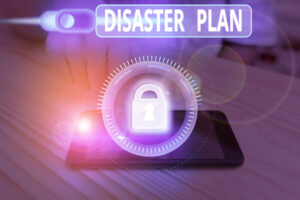
As we enter the busiest part of hurricane season, it’s crucial to ensure the safety of not only your physical environment but also your digital world. Your computer systems contain valuable data and personal information that you wouldn’t want to lose in the event of a disaster. To help you navigate the process, here are the steps you should take to prepare your computer systems for a hurricane.
1) Backup Your Data
Regularly back up all important files, documents, photos, and videos to an external hard drive, cloud storage, or a remote server. Consider using automated backup tools to ensure that your data is continuously backed up without manual intervention. Store a copy of your backups in a secure, off-site location to protect against physical damage.
2) Create an Inventory
Make a list of all your digital devices, including computers, laptops, smartphones, tablets, and external storage devices. Document the make, model, and serial number of each device for insurance purposes.
3) Unplug Devices
Prior to the storm’s arrival, unplug all electronic devices, including computers, routers, modems, and printers, from electrical outlets to prevent power surges.
4) Elevate Equipment
If flooding is a concern in your area, elevate your computer systems and other electronics off the ground to minimize the risk of water damage.
5) Protect Your Devices
Cover your computer systems and other electronics with plastic sheets or garbage bags to shield them from potential leaks or rainwater.
6) Shut Down Properly
Shut down your computers and devices properly before unplugging them. This helps prevent data corruption and hardware damage.
7) Enable Remote Access
If possible, set up remote access to your computer systems. This way, you can access your data and important files from a different location if necessary.
8) Create New Backup and Test Restorations
Periodically test your backup systems by creating a full new backup and restoring a few files to ensure that your backup solutions are working effectively.
9) Prepare a Disaster Recovery Plan
Develop a comprehensive disaster recovery plan that outlines the steps you will take to restore your computer systems and data after a hurricane. Include contact information for IT professionals who can assist in case of technical issues.
10) Wait for the All-Clear
After the storm has passed, wait until you receive official clearance before plugging in and powering on your devices. It’s important to ensure that the electrical infrastructure is stable. Generators can surge and damage sensitive electronics.
By following these steps, you can significantly reduce the risk of data loss and damage to your computer systems during a hurricane. Taking proactive measures to safeguard your digital assets complements your efforts to protect your physical environment, ensuring that you’re well-prepared for any unforeseen circumstances.
